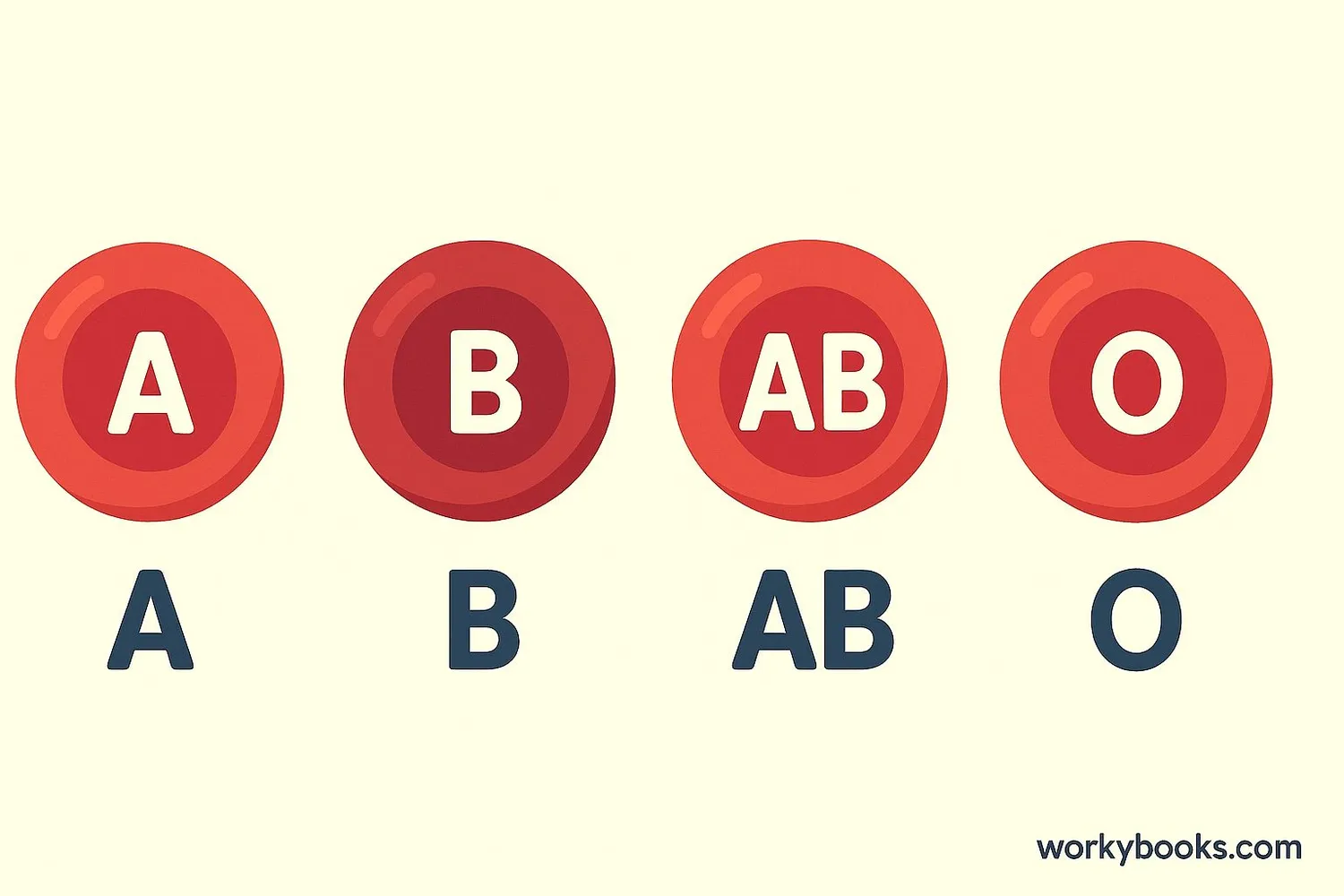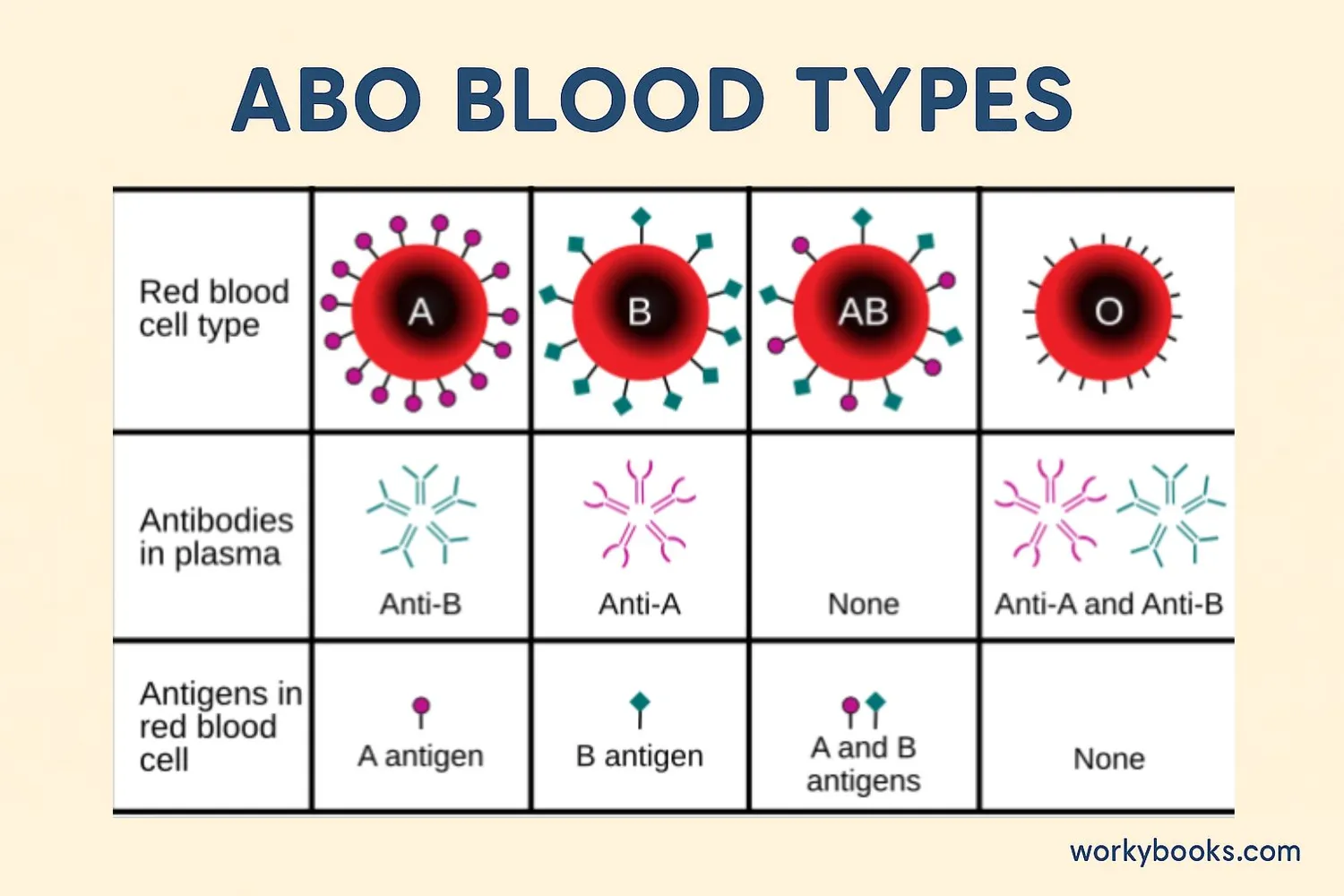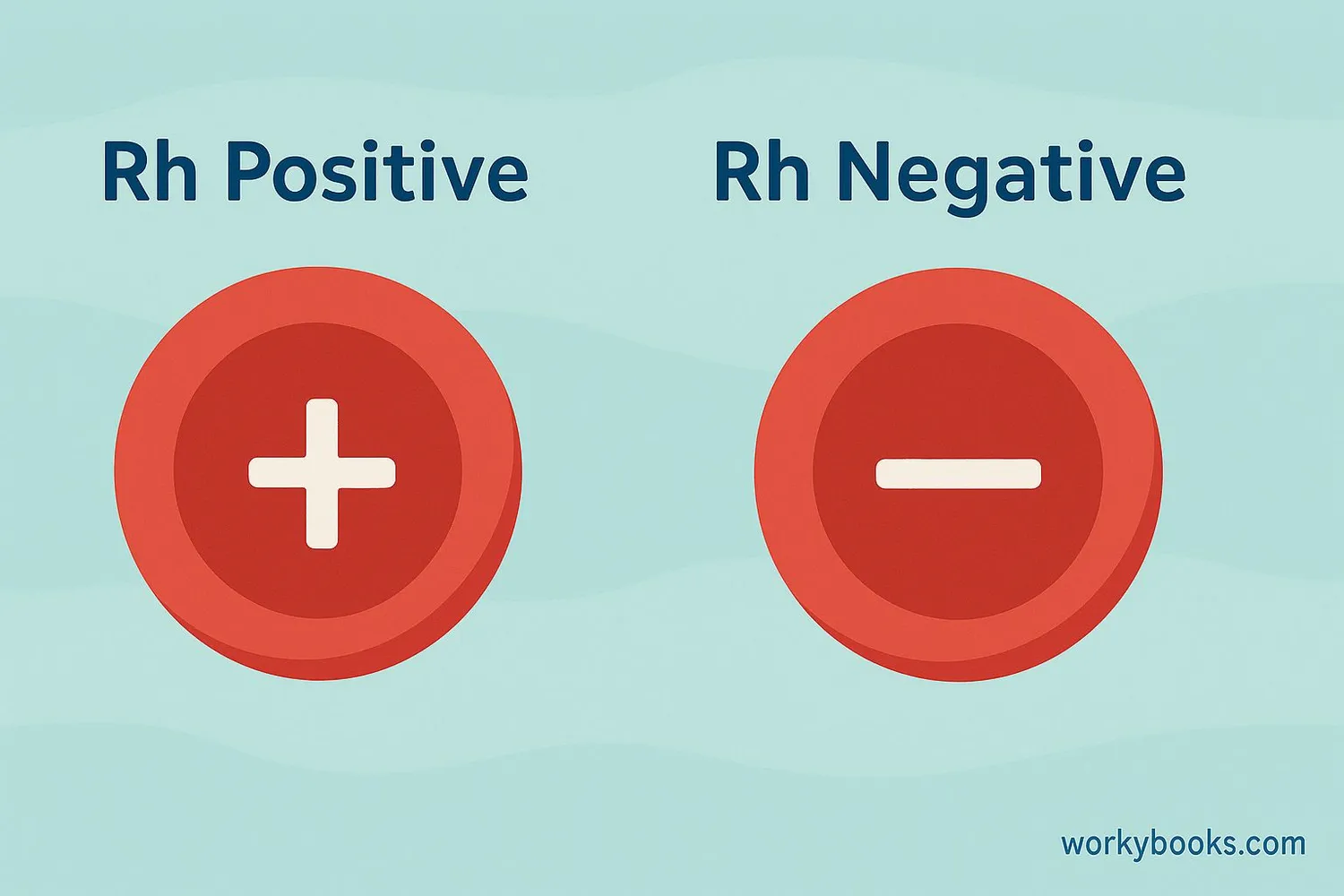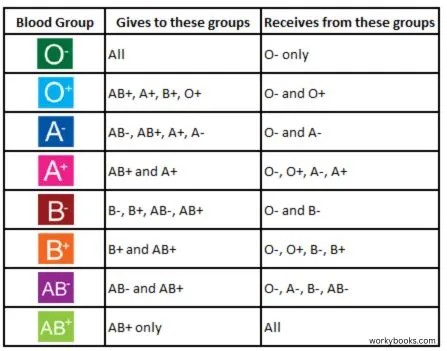Blood Types - Definition, Examples, Quiz, FAQ, Trivia
Discover why blood types matter for health and medical care
What Are Blood Types?

Blood types are categories that describe the special markers on our red blood cells. Everyone has one of four main blood types: A, B, AB, or O. These types are determined by tiny substances called antigens on the surface of blood cells.
Antigens act like name tags on your blood cells. Your immune system uses these to recognize which cells belong to your body and which don't. When you get a blood transfusion, it's important that the donor blood matches your blood type to prevent your body from attacking the new blood.
Blood Fact!
Your blood type is determined by your genes, just like your eye color or height!
The ABO Blood Group System

The ABO system classifies blood into four types based on two antigens: A and B. Here's what each type means:
Type A
Has A antigens and anti-B antibodies
Type B
Has B antigens and anti-A antibodies
Type AB
Has both A and B antigens, no antibodies
Type O
No A or B antigens, both anti-A and anti-B antibodies
Antibodies are like your body's security guards. They attack foreign blood cells that have antigens they don't recognize. For example:
• Type A blood has anti-B antibodies - it will attack B antigens
• Type B blood has anti-A antibodies - it will attack A antigens
• Type AB has no antibodies - it won't attack A or B antigens
• Type O has both antibodies - it will attack A and B antigens
The Rh Factor: Positive or Negative

Besides the ABO types, blood is also classified as Rh positive or Rh negative. This is based on another antigen called the Rh factor (named after Rhesus monkeys where it was first discovered).
If your blood has the Rh antigen, you're Rh positive (like A+ or O+). If it doesn't have the Rh antigen, you're Rh negative (like B- or AB-). About 85% of people are Rh positive.
Why Rh Factor Matters
Rh negative mothers carrying Rh positive babies need special care to prevent health problems. Doctors can give medication to prevent complications.
Blood Compatibility and Transfusions

Blood compatibility is crucial for safe transfusions. When someone needs blood, doctors must match the donor's blood type with the recipient's to prevent dangerous reactions.
Universal Donor and Universal Recipient
• Universal Donor: Type O negative blood can be given to anyone because it has no A, B, or Rh antigens that might cause reactions.
• Universal Recipient: Type AB positive blood can receive from any type because it has no antibodies to attack A, B, or Rh antigens.
| Your Blood Type | Can Donate To | Can Receive From |
|---|---|---|
| A+ | A+, AB+ | A+, A-, O+, O- |
| A- | A+, A-, AB+, AB- | A-, O- |
| B+ | B+, AB+ | B+, B-, O+, O- |
| B- | B+, B-, AB+, AB- | B-, O- |
| AB+ | AB+ | All blood types (Universal Recipient) |
| AB- | AB+, AB- | AB-, A-, B-, O- |
| O+ | O+, A+, B+, AB+ | O+, O- |
| O- | All blood types (Universal Donor) | O- |
Blood banks carefully test all donated blood to ensure it's safe. A blood typing test determines your ABO group and Rh type so doctors know what blood you can safely receive.
Blood Types Quiz
Test your knowledge about blood types with this quiz! Answer all 5 questions to see how much you've learned.
Frequently Asked Questions
Here are answers to common questions about blood types:
Blood Type Trivia
Discover some amazing facts about blood types:
Global Distribution
Blood type distribution varies worldwide! Type O is most common in the US (around 45%), while type B is more common in Asia (up to 30% in some areas).
Rare Blood Types
The rarest blood type is Rh-null, sometimes called "golden blood." Only about 50 people in the world have this blood type that lacks all Rh antigens.
Animal Blood Types
Animals have blood types too! Dogs have more than 12 blood types, while cats have only 3 main types. Some animal blood can even be donated to other species.
Blood Type History
The ABO blood group system was discovered in 1901 by Karl Landsteiner, who won the Nobel Prize for this discovery that made safe blood transfusions possible.


